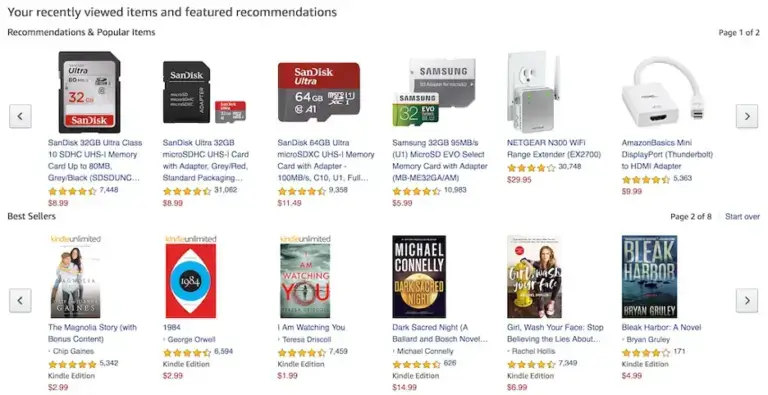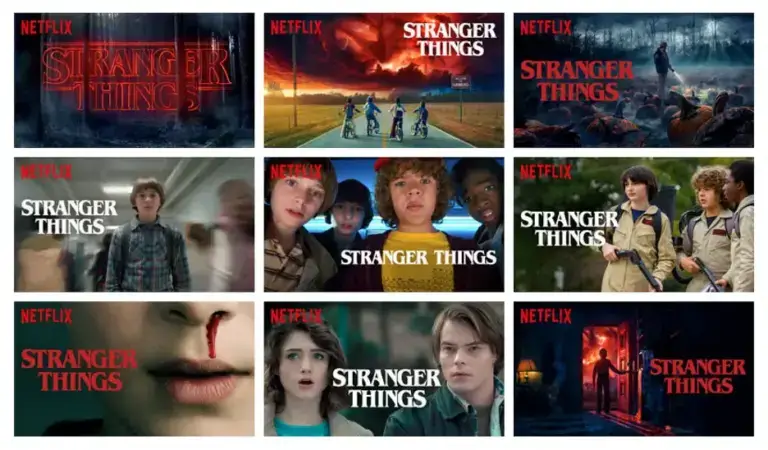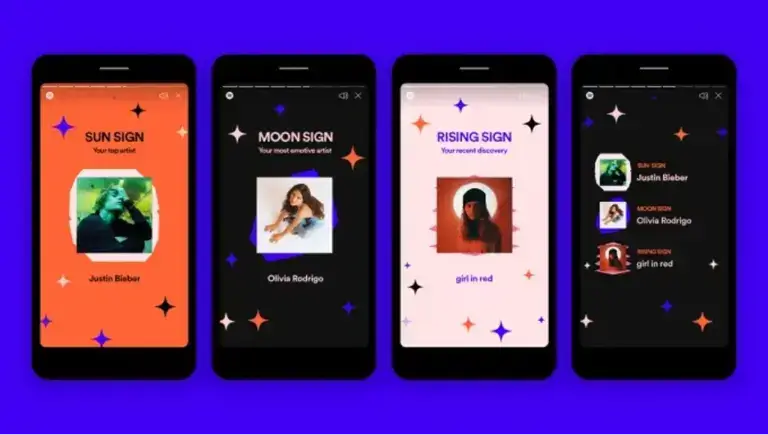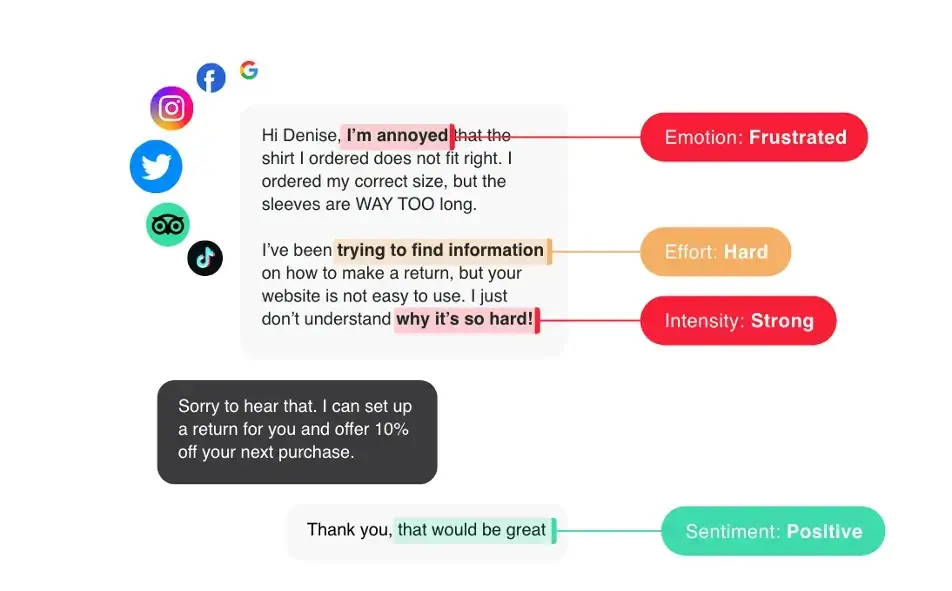Author: Rosemin Anderson
Subject Matter Expert: Dave Pabley
What is a personalised customer experience?
Whether it’s with online retailers or in physical stores, we like to shop where we feel valued and buy from businesses we trust. At its simplest, that is what a truly personalised customer experience offers.
In much the same way that you’d rather put your faith in a friend than a stranger, organizations that tailor their shopping experience with personalisation tend to attract and keep customers – and those that don’t, don’t.
So what do we mean when we say a ‘personalized customer experience?’ Well, it’s the art of using customer data to adapt your offering.
That could mean something as simple as addressing them by their first name in an email, rather than ‘dear customer,’ or it could mean employing the latest in experience management software to deeply understand customer likes and dislikes, and tailor specific offers, personalized recommendations, or even the entire purchasing journey in real-time.
These days, businesses interact with customers across a variety of channels – email, social, in-store, over the phone, via apps, and more – and the more you personalize the customer journey on each of those touchpoints, the better their experience will be.
Learn how Experience iD can boost personalisation at scale
Does a personalised experience really impact results?
Yes. And, what’s more, all signs point to greater personalisation efforts becoming a necessary part of day-to-day business.
Today’s customers expect personalisation as standard. They know about the tools available to businesses and marketers, they know that they’re often handing over their data to the companies they do business with, and they expect that the reward for that should be personalised experiences. Salesforce research shows that 79% of customers are willing to share data to that end – rising to 88% if the result of that data share is personalised offers.
Most importantly, research shows that offering a personalised customer experience based on feedback and relevant data can directly impact a business’ bottom line.
80% of customers are more likely to do business with brands that provide a personalised experience.
Recent Accenture research, for example, found that 48 percent of consumers said that they expected specialised treatment for being a good customer, while 33% of surveyed customers who’d ended a relationship with a business had done so due to a perceived lack of personalisation.
Gartner backs this up, citing that some 38% of their customers surveyed stopped buying due to lackluster personalisation. Epsilon Research, meanwhile, finds the opposite to be true: 80% of customers are more likely to do business with brands that provide a personalised experience.
In short: personalisation builds trust, boosts customer satisfaction, and helps build customer loyalty over the long term.
How hard is personalising the customer experience?
We get it: you’re concerned that diverting marketing spend into tailoring the customer experience might be more of a time sink than it’s worth. But that’s demonstrably not the case.
Recent McKinsey data, for example, suggests that nailing customer personalisation can deliver eight times the associated ROI. We know, too, that 42% of customers cut their spending with a brand after a bad experience – and that in today’s market, a bad experience and a personalised one can be the same thing.
But beyond that, the good news is that it’s never been easier to sift through customer data, understand customer feedback, track a customer’s purchase history and monitor multiple channels all at once, thanks to the proliferation of AI in experience management tools.
With the right software doing the heavy lifting for you, delivering personalised customer experiences becomes a simple case of choosing what data to collect and which metrics to track, reacting to dissatisfiers and suggestions, and fine-tuning things based on what you learn.
How to personalize the customer experience
So now you know the benefits for, and reasons why implementing personalised experiences across the customer journey, we need to look at how. Here are some suggestions around how you can implement personalisation at any scale.
1. Understand your current customer experiences
You can’t personalize the customer experience without first understanding what customers want, and exactly how things are for them right now.
At Qualtrics we like to talk about monitoring ‘X-Data’ and ‘O-Data’, so let’s explore those first:
X-Data®
This is short for ‘experience data’, and essentially means the ‘human factor’ data — the beliefs, the emotions, and the sentiments. X-data is the human feedback that points to the gaps between what you think is happening and what’s really happening. X-data includes traditional feedback sources like surveys, but also includes interactions like calls, chats, and emails, as well as social messaging.
O-Data
Short for ‘operational data’, O-Data is sales and finance figures around customer activity and retention – quantitative records of tangible activities. O-data is helpful because it tells you about win rates, profitability by product line, and where sales are coming from. Most companies do pretty well with operational data because it feels automatic, but it’s easy to take for granted.
Monitoring both together
The key to understanding the customer experience is to monitor both X-Data and O-data together – tracking not just what was sold and where, but how customers felt about it.
The simplest way to do this is by soliciting direct customer feedback through surveys. Ask customers how their experience has been, posing questions about personalisation that can lead to insights about what to change first.
That’s alongside industry-standard surveys like NPS (Net Promoter Score) and CSAT (Customer Satisfaction), which will help you benchmark against others in your industry.
2. Boost personalization efforts with AI
Artificial intelligence can do the heavy lifting for you when it comes to understanding what customers are saying – and can suggest tweaks and responses for you.
Experience iD, for example, can intelligently decipher meaning and sentiment from customer feedback and interactions across touchpoints, using real-time customer data to make personalised adjustments in response.
Has someone had a bad customer experience recently? Offer them a personalised offer the next time they visit your site to try and get them back onside. Was their last visit a roaring success?
Welcome them back and point them to more things you know they might like. That kind of intelligent personalisation is only really possible at scale with automated listening.
Moreover, when you’re using the right listening tools you can build much better segmentation that drills down into your customer data.
Grouping your audience by gender, age, and location is a bit old-hat. Modern segmentation is hyper-focussed, providing an easier way to personalize at scale, as well as enabling personalized customer service where agents already know a customer’s entire purchase history.
3. Think: Omnichannel
Similarly, it pays to think about every touchpoint that your customers visit, and try to connect the dots for them. That means tracking customer data so that, for example, a customer support agent manning the phones already knows that a customer has expressed a problem on Twitter, or that loyal customers are receiving the right offers for them via email.
Ask yourself: which touchpoints are customers interacting with (or about) you on? And how can you offer more personalised experiences that span across all of them?
The answer is usually by collecting and harnessing data. Lots of it. Again, the right software tools can help you here. By sifting through seemingly disparate data from a multitude of channels, you can find links that tie customers into much more focused groups along a well-defined journey.
4. Orchestrate the customer journey
Customer journey orchestration can be a powerful way to minimise abandoned shopping carts, but that’s mainly because when you’re making proactive changes to the customer journey you’re showing you know your customer better than ever before.
By using customer experience management software, you’ll be able to listen out for opportunities and pain points across every relevant touchpoint and connect that to customer segmentation data to produce no-nonsense, data-driven, actions by way of more personalised experiences.
Getting personal with customer data
Has a customer signed up for your service but forgotten to verify their email? Send a personalized email to remind them. Has a customer bounced off of a purchase, and later left a bad review about the process on a third-party site?
You’ll be the first to know about it. With that knowledge, not only can you make efforts to fix that point of friction, but you can send that user a personalised offer that incentivises them to return.
After all, if you’re only capturing static, siloed data, you’ll only be able to make broad, generic changes. Dynamically tailoring the customer journey for specific people, on the other hand, is the smarter way for brands to become customer experience leaders.
Learn how Experience iD can boost personalisation at scale
Examples of personalised customer experience
Many of the businesses you know and frequently interact with are already using personalised customer experiences to create customer loyalty and foster a strong connection with their audiences.
1. Amazon
E-commerce behemoth Amazon has introduced personalization at scale to give customers a deeply personalised experience. From push notifications based on prior purchases to suggesting bundled items based on similar users’ buying behaviour, Amazon has nailed the art of offering products that will statistically be of greater interest to new or returning customers. This approach, when added to services such as Amazon Prime that create convenience for the customer, creates an overall personalised customer experience that draws users to the brand and retains them.

Image from: Amazon.com
2. Netflix
A continually iterative approach to personalization algorithms has allowed Netflix to hook users and create a loyal customer base that returns for more. By tailoring everything to the individual, from new suggestions down to the individual artwork that advertises each show on the user’s home page, the entire customer experience is intimately attuned to each customer. Users are instantly given selections that are likely to appeal to them based on behavior from users with similar demographics and their own past watching preferences.

Image from: Netflix.com
3. Pull & Bear
The fashion-focused Pull & Bear website uses navigation to automatically narrow down customer preferences and desires. From the outset, you’re provided with options such as female/male clothing, with the site constantly segmenting as you journey through the platform. Even without data being collected and analysed, users can self-guide through the personalisation process easily.

Image from: Pullandbear.com
4. Spotify
Spotify has always created personalised lists of suggestions for their users to entice those listening to sign up for memberships, but the brand has recently offered even greater personalisation based on their user data.
From customers’ astrological signs to type of music they listen to at a certain type of day (energetic, soothing etc.), users can listen to ever-more specific mixes and suggestions.

Image from: Spotify.com
Personalised customer experience best practice
Here’s some tips and suggestions for making your personalised customer experiences more effective.
Use data to ensure your content is relevant
Your customers are looking for product or service suggestions that are relevant to their interests. Use customer data and feedback to ensure that the outreach and offers you make along the customer journey are specific to their needs or wants. Eliminate the guesswork with data insights that examine each individual customer’s preferences, allowing you to enact customer experience personalisation on a micro and a macro scale.
Offer a consistent omnichannel customer experience
Consistency across all the channels your customers use will help you to create a strong brand identity, but also help to develop stronger connections with your customers. Provide multiple channels for customer contact and ensure that each provides a personalised customer service, creating a cohesive customer journey that allows your audience to seamlessly navigate your platforms. Ideally, you’ll automate this personalised customer service experience, with your founding technology able to intervene in the moment and create experiences that customers will want, driving satisfaction and reducing the cost to serve.
Give customers a say in their personalisation
Allow customers to feed back to you to help drive insights into personalisation preferences. Provide self-service options for those that prefer a more hands-off approach, and offer multiple avenues of contact for those that prefer a more involved brand interaction.
Personalize on an individual level
Though it’s helpful to segment your audience, individual personalisation takes into account each specific customers’ past interactions with your brand and generates niche insights. With the right technology, you’re able to create customer profiles of each customer, tracking every interaction they have with your company. Then, using AI-powered technology to analyze those interactions, you’re able to understand deeper customer data such as emotion, intent and effort. When you then provide personalised customer service, it’s with every past interaction and every future desire in mind.
Empower your frontline
At the core of your customer experience, your customer service reps are at the forefront of providing a tailored customer experience. From call centre agents to retail managers, you can give your frontline team members the tools to give everyone the experience they want and reap the rewards. Provide detailed customer profiles and deliver suggested actions automatically that are specific to each customer.

How Qualtrics® helps to leverage your customer feedback for increased personalization
Qualtrics Experience iD is a next-generation experience management platform that wants to do the hard work for you when it comes to listening, analyzing, and auditing the data that drives personalised experiences.
By tracking behaviour and trends on a customer-by-customer level, Experience iD not only shines a real-time light on pain points and areas for improvement in the customer journey but also surfaces opportunities for highly-personalised customer experiences that directly influence sales and customer expectations.
Those personalized recommendations, offers, and experience tweaks become easy to action when all the dots are joined up – across every touchpoint and for every customer on an individual, granular level. And that’s exactly what Experience iD can help with.
Find out how Experience iD can supercharge your customer personalisation efforts